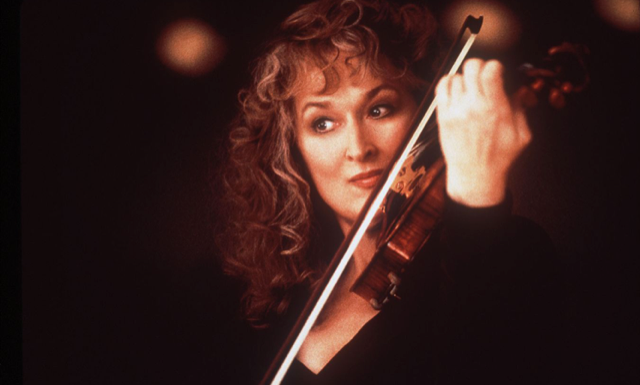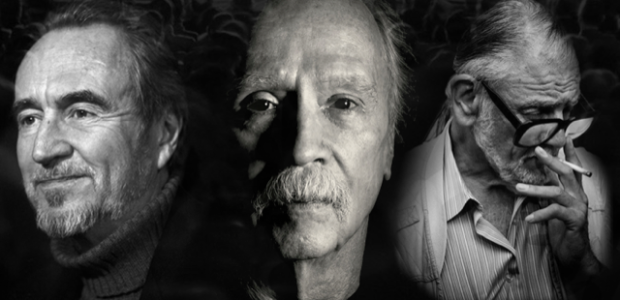Boxes and labels create nothing but limitations. When it comes to film directing, being labeled a “horror director” is a detrimental stamp to place on directors (akin to an NC-17 rating that restricts audiences and advertising). If you direct horror films, studios want you to be their horror person and will swiftly guide you back to that box if you try to produce any non-horror films. If they do ultimately allow you to do your drama or comedy, they won’t supply you with as much funds than if you just did another horror project or did a sequel to a successful horror movie.
This isn’t a problem for the horror audiences at first glance as a director’s complications with expanding past horror usually leads to career-defining films. If George A. Romero didn’t fail with THERE’S ALWAYS VANILLA or SEASON OF THE WITCH, we might not have gotten DAWN OF THE DEAD. If Wes Craven didn’t fail with the films post-LAST HOUSE ON THE LEFT, Freddy might never have ended up in our nightmares. If John Carpenter… well, Carpenter never really failed when he went outside of horror, but he still felt the limitations with the horror label.
Carpenter wanted to make Westerns (he was inspired by Howard Hawks, a frequent genre-hopper) but westerns went out of style by the time he started to direct. ASSAULT ON PRECINCT 13 is essentially a remake of Hawks’ RIO BRAVO with some NIGHT OF THE LIVING DEAD influences. Horror was working its magic on Carpenter before Michael Myers was even an idea, which Carpenter revealed in an interview at New York Film Academy that he was typecast into horror and that horror found him, he didn’t find it.
Carpenter is the anomaly in this conversation as he went on to be the most successful genre hopping horror director in modern films. Romero and Craven essentially failed every time they tried to deviate from horror.
Romero’s first film was supposed to be a teenage-driven drama film entitled WHINE OF THE FAWN à la Ingmar Bergman’s THE VIRGIN SPRING (which also inspired Craven’s LAST HOUSE ON THE LEFT), but failure to secure funding drove him to make NIGHT OF THE LIVING DEAD. Romero did different genre forays but mainly failed every time, but he never seems upset about being a horror director or sticking to his bread and butter of slow-moving ghouls. Craven was trying to get out of horror as soon as THE LAST HOUSE ON THE LEFT basically got him ostracized from the film industry.
Craven was viciously outspoken over his distaste of never being able to break free of the “horror” label. He and Sean Cunningham (co-creator of FRIDAY THE 13th) reportedly spent two and a half years after they did LAST HOUSE to make anything that was as far removed from that type of subject material as possible. But people only wanted Craven to make another film similar to his first. It took Craven 20 years to finally make his first non-horror film with MUSIC OF THE HEART and even then, marketing teams had to downplay his involvement to try to get audiences to buy a ticket. His 1986 film DEADLY FRIEND was set to be a sci-fi movie with thriller elements until test screening audiences wished it had more graphic scenes like in previous Craven films — the studio got their way, reshoots involving more violence were added and the movie subsequently failed.

(Meryl Streep in Craven’s outlier 1999 film MUSIC OF THE HEART.)
Famous horror directors’ inabilities to expand past horror can eventually lead to them feeling stale, complacent and producing less-than-great pictures. Frustrations of being labeled a “horror director” has nothing to do with having disdain for the genre, it’s more so disdain for the limitations that the film industry has on those that are labeled that. Restricting a director to one lane will eventually lead them to stunt their growth as creatives. Carpenter once voiced annoyance of having a vision of himself different from how others viewed him, and that he ultimately had to start embracing it instead of letting it drag him down.
Creatives need an opportunity to challenge themselves and even fail. Directing challenging films will push them as much as failing will. Nothing great comes from rushing an artist or pressuring them into beating the same drum repeatedly. We don’t get DAWN OF THE DEAD if Romero didn’t experiment with styles and genres beforehand that didn’t necessarily work for him.
Being that the film industry has dramatically changed from decades past, being a genre hopper isn’t looked down upon as much anymore. But horror still isn’t respected as a valuable source of art by the general public. This level of contempt for horror further pushes the agenda of a “horror director” having a bad connotation.
The environment of film as it is today doesn’t seem as gung-ho to stiffen independent and vibrant voices over recycled material. Both exist simultaneously and both can end up being as successful as the other. Last year ALIEN: COVENANT only made $74 million domestically on a $97 million budget while GET OUT made $176 million domestically on a $4.5 million budget. GET OUT can be seen as a rare exception but also as audiences wanting fresh material for the current climate of entertainment.
In recent history, Fede Alvarez debuted with the excellent EVIL DEAD (2013) and followed it up with the tense thriller DON’T BREATHE. He’s currently directing THE GIRL IN THE SPIDER’S WEB, seven years after the David Fincher adaptation and after the DRAGON TATTOO hype has died out. The upcoming crime thriller looks to be set up to fail even with Claire Foy taking over Rooney Mara’s exuberant role. If it does fail, studios will look at Alvarez as the horror guy since he failed with SPIDER’S WEB — limiting him for the foreseeable future. (I’m not wishing it fails, by any means).
Even Ari Aster, director of the new horror darling HEREDITARY, revealed in an interview with Q on CBC that while pitching the film for financing, he was careful not to describe HEREDITARY as a horror film.
There are exceptions to this, of course. Sam Raimi went from two EVIL DEAD films to directing one of the most profitable trilogies of all time — also in that camp is Peter Jackson, who got his start with several horror films before breaking into the mainstream with HEAVENLY CREATURES in the mid-’90s.
Wes Craven gave an informative interview with fellow horror director Mick Garris in the mid-2000s that addressed his grievances with being stuck in the horror box, but finding love working within that box. Craven states that it’s an extraordinary gift to even be able to make films and he would have no problem making the rest of his films in the horror genre. He ends the conversation with a remarkably hopeful quote on his position of staying in the horror genre: “I’ll take every opportunity to get out but if I’m going to be a caged bird, I’ll sing the best song I can.”
The people who used to stiffen Craven’s energy for non-horror films have left the industry and have been replaced with those that want excellent creators to create — no matter the limitations. Is the attitude and stigma of horror changing? It’s too early to tell. But with Jordan Peele winning Best Original Screenplay for a horror film, The Academy of Motion Picture Arts and Sciences inviting a record number 928 individuals to join, and HEREDITARY making a killing at the box office along with killing it with critics, there is hope on the horizon. Horror deserves a blood-soaked seat at the table, and it looks like we will finally be able to push our chair in, sooner rather than later.
Tags: Film, George A. Romero, Horror, Howard Hawks, Ingmar Bergman, john carpenter, Mick Garris, Peter Jackon, Sam Raimi, Sean Cunningham, Wes Craven


No Comments